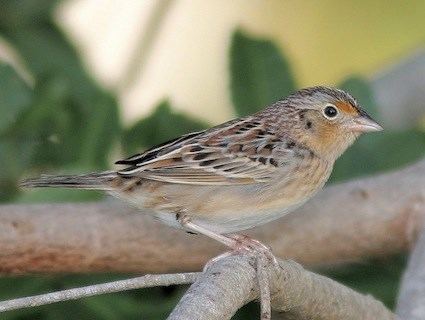Kingdom Animalia Order Passeriformes Genus Ammodramus Higher classification Ammodramus | Phylum Chordata Family Emberizidae Scientific name Ammodramus savannarum Rank Species | |
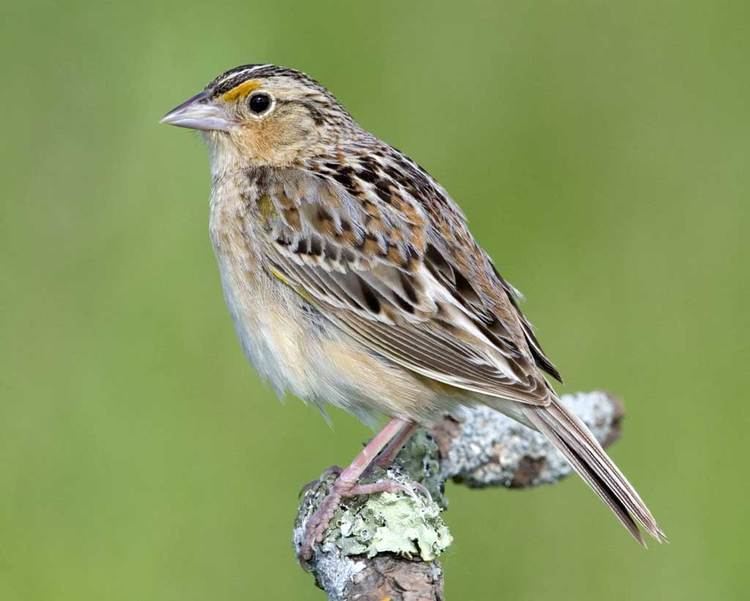 | ||
Lower classifications Florida grasshopper sparrow, Grasshopper Sparrow (ammolegus ssp.) | ||
Grasshopper sparrow song
The grasshopper sparrow (Ammodramus savannarum) is a small American sparrow. The genus Ammodramus contains nine species that inhabit grasslands and prairies.
Contents
- Grasshopper sparrow song
- Florida grasshopper sparrow
- Description
- Distribution and habitat
- Behaviour
- References
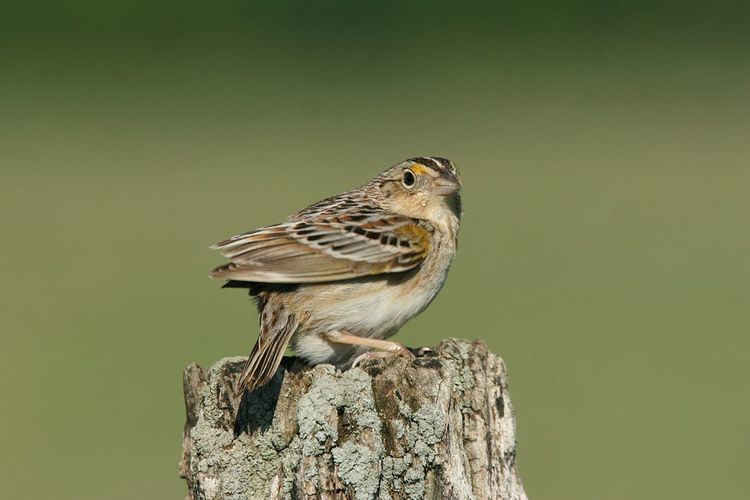
The Florida grasshopper sparrow (Ammodramus savannarum floridanus) is endangered.
Florida grasshopper sparrow
Description
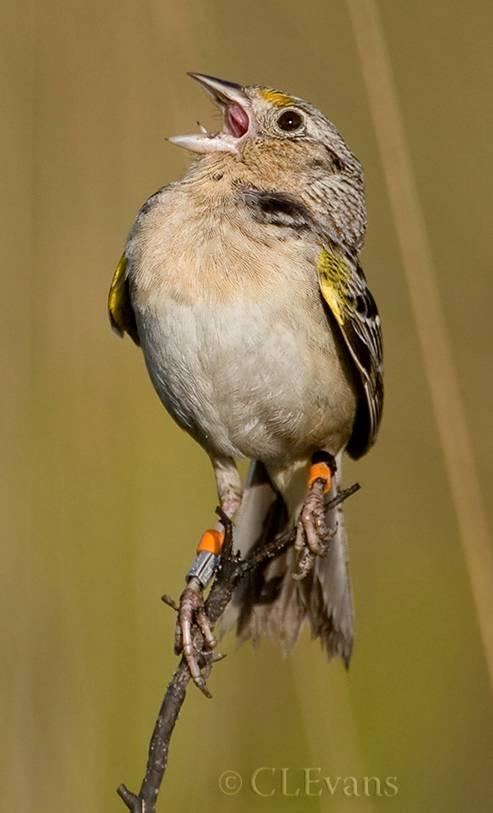
These small sparrows measure 10–14 cm (3.9–5.5 in) in length, span about 17.5 cm (6.9 in) across the wings and weigh from 13.8 to 28.4 g (0.49 to 1.00 oz), with an average of 17 g (0.60 oz). Adults have upperparts streaked with brown, grey, black and white; they have a light brown breast, a white belly and a short brown tail. Their face is light brown with an eye ring and a dark brown crown with a central narrow light stripe. There are regional variations in the appearance of this bird.
Distribution and habitat
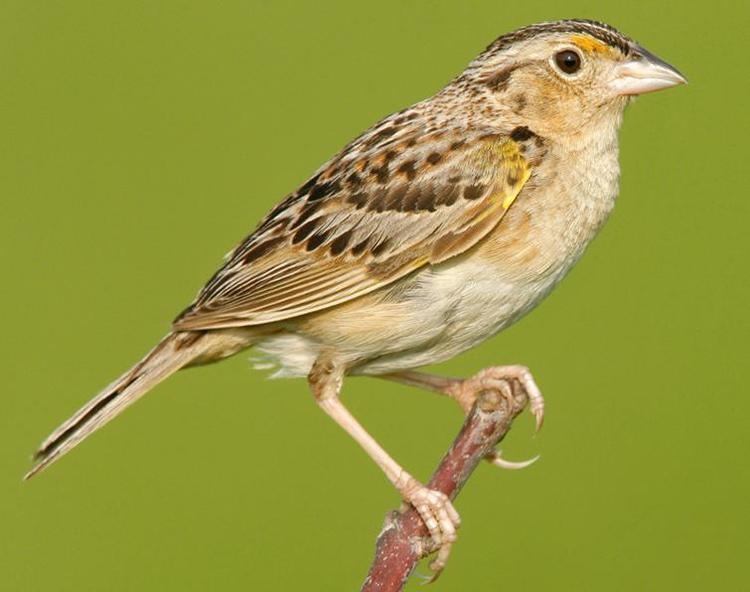
Their breeding habitat is open fields and prairie across southern Canada, the United States, Mexico and Central America, with a small endangered population in the Andes of Colombia and (perhaps only formerly) Ecuador. The northern populations migrate to the southern United States, Mexico, Central America and the Caribbean. Like many grassland birds, this bird's numbers have declined across many parts of its range, including a 98% drop in New York State.
Behaviour
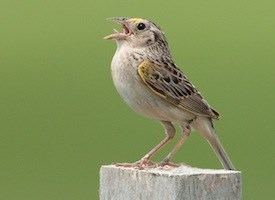
The nest is a well-concealed open cup on the ground under vegetation. They forage on the ground in vegetation, mainly eating insects, especially grasshoppers, and seeds.
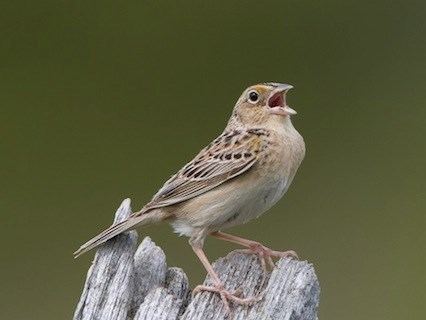
This bird's song is a buzzy tik tuk zee, resembling the sound made by a grasshopper. Unlike some other members of the Ammodramus family of sparrows, they will readily sing from open and exposed perches.
